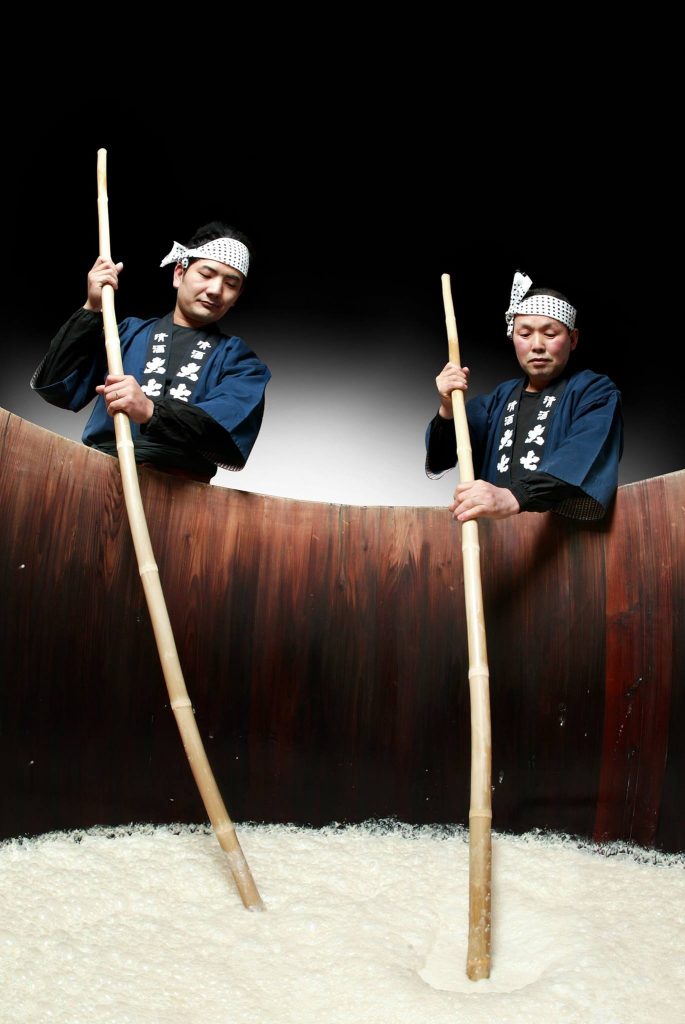

Committed to the art of kimoto style brewing, Daishichi has been carrying the torch of old-school, hands-on brewing since 1752. Kimoto style sake requires an extremely labor & time intensive method of creating the fermentation starter (called the shubo) using weeks of manual pole-ramming. Less than 1% of sake breweries today use this production method, partly because kimoto method sake all but requires the brewery to become a natural home for ambient yeast and other happy microbes…it’s not something you decide to do on a whim.
For centuries, until the early 1900s, it was thought that the only way to produce sake was kimoto method- to spend hours on end (for weeks) mashing the fermentation starter. As technology and innovation improved, less labor intensive methods emerged. The result of kimoto method brewing is a shubo that contains much more ambient yeast, lactic acid, and other “good” bacteria. The sake produced from this method is distinctly different from sake produced by conventional methods – it is often earthier, with a wildly expressive character and can even take well to aging- a rarity in the sake world. In fact, Daishichi ages their sake at the brewery for two years under optimal conditions prior to releasing it to the public. Part of this special process requires their sake to be “capped” with nitrogen at the bottling stage, ensuring no excess oxygen can affect the sake as it matures at the brewery. While the sake matures in Daishichi’s storage area, well-water is pumped through the walls to mimic the environment of the natural world around it.
Daishichi also employs a special method for milling their rice called, “super-flat polishing”. In short, this entails making manual adjustments to their rice mill that polish away the undesirable parts of the rice grain (fats & proteins) in a much more precise manner, leaving more of the pure starchy center that sake breweries strive for. This is a much more time-consuming method of precision polishing, and can take up to twice the amount of time as a traditional polish. For this, the chief miller has been officially recognized in Fukushima as a “Master Craftsman”, which was a first. Daishichi only uses yamadanishiki and gohyakumangoku rice varieties.
Website I Facebook
Sell Sheet
Daishichi Kimoto Honjozo
Daishichi Kimoto “Classic” Junmai
Daishichi Minowamon Kimoto Junmai Daiginjo